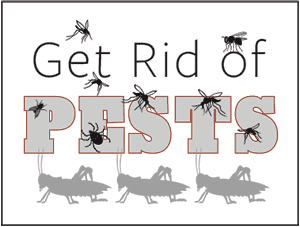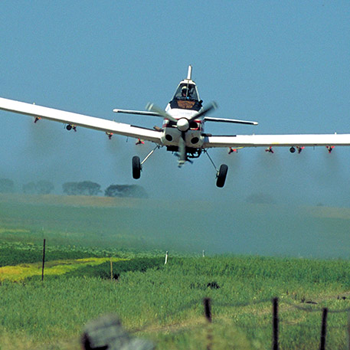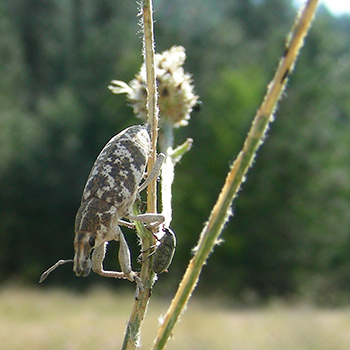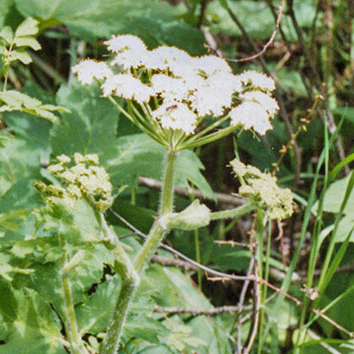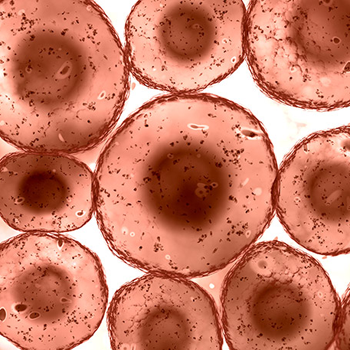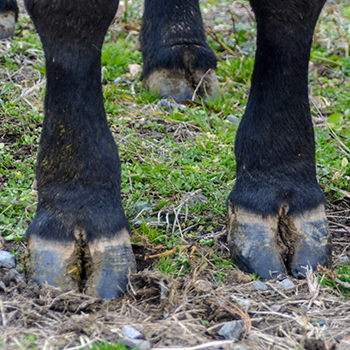Gizmos & Gadgets
Products for use on farms and ranches.
This month’s edition features an online resource for getting to the bottom of reproductive shortfalls, a model to help predict grass availability, a waterer promoted as safer to livestock, a new genomic test for commercial cow-calf operations, a gizmo to help tie down or step up to a truck bed, and protection for a farmer’s hands.
Online resource for reproductive success Many veterinarians say getting to the bottom of an animal health challenge often involves deducing a series of clues. To help beef producers solve the mystery of why their cattle conception rates aren’t what they’d hoped, Kansas State University (K-State) has launched Heifer Consult. The free online resource is available on the Beef Cattle Institute website under the “Tools” header.
 |
To help beef producers solve the mystery of why their cattle conception rates aren't what they'd hoped, Kansas State University has launched a free, online resource called Heifer Consult. [Photo by Shauna Hermel] |
It is designed to help beef cow-calf producers improve the reproductive success of their heifers and young cows, explains Bob Larson, K-State veterinarian and principal investigator on the USDA grant that funded the project. The tool is focused around heifer development from weaning at about 7 months of age to the time a heifer conceives her second calf at about 26 months of age.
“As producers work through this program, they are asked several questions about the reproductive status of the herd, as well as management practices,” Larson says. Ideally, producers will use records from a pregnancy check done by a veterinarian shortly after the breeding season, but calving data can also be used.
“Through [the resource] we hoped to replicate the type of discussion a producer might have with an expert face-to-face,” Larson says, noting the intent is for producers to use the tool in consultation with their veterinarian.
Heifer Consult was developed through a collaborative effort of veterinarians and beef cattle extension specialists from across the Midwest. K-State faculty joining Larson on the development team are Brad White, veterinarian, and Sandy Johnson, beef extension specialist. Others include Bob Cushman, USDA Meat Animal Research Center; Rick Funston, University of Nebraska; Dale Grotelueschen, University of Nebraska Great Plains Veterinary Educational Center; Scott Lake, University of Wyoming; Dave Smith, Mississippi State University; and Sherri Merrill, a veterinary practitioner from Allen, Kan.
For more information, visit https://bit.ly/3bvhGfF.
Model to help predict grass availability Predicting grassland production is a major challenge for ranchers and other land managers with grazing livestock. This productivity is key each spring when these managers are trying to decide how many cattle to turn out to pasture, how long to graze an area or where forage might be abundant.
An online tool — first created by Colorado State University researchers and designed to help make such decisions — is available again this spring. Known as the Grassland Productivity Forecast or Grass-Cast, the tool was developed in 2017 by scientists at the USDA Agricultural Research Service, with other federal agencies and several universities.
The forecasting tool was originally designed for ranchers and grassland managers in the Northern Plains and was expanded in 2019 to cover the Southern Plains. New features this year include expanded territory, including most of New Mexico and Arizona, and forecasts for individual 6-mile ✕ 6-mile areas, rather than the county-by-county results available in previous years.
William Parton, professor emeritus and a senior research scientist at the Natural Resource Ecology Lab (NREL) at CSU, says the project is a collaborative effort. He and Melannie Hartman, senior research associate at NREL, initially posted a version of Grass-Cast online before connecting with USDA researchers who received feedback from ranchers on what would be most useful for them.
Grass-Cast on April 30 indicated below-normal grass production in the southern and eastern part of the grassland regions in eastern Colorado, Parton says, adding, “That’s a bit worrisome.” Elsewhere, in the northwestern part of the grasslands and east of Fort Collins, the regions looked fine, helped in part by recent spring snowstorms.
“The impact of precipitation or prolonged dryness on the forecast depends on cumulative effects of soil moisture over the growing season and the timing of the event,” says Hartman. “If an area has been dry, Grass-Cast predicts if grassland production can reach normal levels with enough precipitation or not.”
During the 2019 season, the Grass-Cast website was visited nearly 3,000 times by more than 1,800 different users, said Dannele Peck, an ag economist who oversees Grass-Cast as director of the USDA Northern Plains Climate Hub.
The partnership has expanded in recent years and now includes USDA Natural Resources Conservation Service (NRCS), U.S. Forest Service (FS), USDA Farm Service Agency (FSA), CSU Extension, University of Arizona and the National Drought Mitigation Center at the University of Nebraska-Lincoln.
For more information, including tutorial videos, printable handouts and scientific papers, visit https://bit.ly/2Wtcchg.
A safer waterer The Bar-Bar-A Horse & Livestock Drinker removes the worries of standing water and electricity, using neither, and is easy for the animals to use while being low maintenance for the caretaker. It also saves a significant amount on the electric bill.
“We are firm in our belief that animals, water and electricity do not mix,” says David Anderson, president and CEO of Bar-Bar-A. “We have seen many times where an electric automatic waterer has been the sad reason in either killing an animal or making them sick because of dehydration.
 |
The Bar-Bar-A Horse & Livestock Drinker removes the worries of standing water and electricity, using neither, and is easy for the animals to use while being low maintenance for the caretaker. |
“We developed a livestock drinker with which there is no worry about shocking or killing your animals, and the water temperature is right, regardless of season, so animals drink more and are healthier.”
The Bar-Bar-A Horse and Livestock Drinker can handle up to 25 head of livestock. Anderson says animals can learn to drink from it quickly; horses usually in less than an hour. The animal’s nose brushes against the paddle, triggering the supply valve to open and filling the water bowl. After the animal finishes drinking, the remaining water drains back into the ground, leaving an empty bowl and eliminating standing water to freeze in the winter, get hot in the summer, and grow algae or mosquito eggs. Thus, a potential breeding ground for disease is eliminated, and there is no weekly cleaning associated with the product.
This automatic waterer uses water that is located under the earth’s surface, regulating the temperature to the season and ensuring that the water is always at a temperature that will appeal to animals. The valve is below frostline to prevent freezing, and for severe climates, the drinker comes with an insulator, which keeps freezing air from reaching the supply line and valve.
To see how the Bar-Bar-A Horse & Livestock Drinker works and is different from other automatic waterers, please the website for a video demonstration and product details at https://bit.ly/3brJiSN.
New genomic test for commercial cow-calf audience Zoetis released a suite of new genetic testing and decision-making tools designed specifically for commercial cow-calf operations. Inherit Select™ is the latest genomic test to offer genomic expected progeny differences (GEPDs), providing commercial cow-calf producers with genetic insights to make critical replacement female selection and breeding decisions.
The innovative, multi-breed genomic test provides predictions for commercial crossbred females spanning eight major breeds, including Angus, Red Angus, Simmental, South Devon, Gelbvieh, Hereford, Charolais and Limousin. The test delivers GEPDs and percentile rankings for 16 traits, as well as sire parentage and breed composition.
To make decisions for genetic improvement easier for commercial cow-calf producers, Zoetis offers three new indexes with Inherit Select. The Zoetis Total Return (ZTR) index simplifies multi-trait selection and breeding to help maximize returns for commercial beef replacement heifers. The ZTR index incorporates economic and production assumptions, and the full range of GEPDs into one, easy-to-use number. The Zoetis Cow|Calf (ZCC) index and Zoetis Feedlot|Carcass (ZFC) index inform decisions for these production segments.
“Commercial cow-calf producers are accustomed to using EPDs and economic indexes when making bull-buying decisions,” says Kent Andersen, director of genetics technical services for Global Genetics with Zoetis. “Inherit Select provides these producers the power of GEPDs to make more accurate replacement decisions, and the new indexes simplify selection and breeding decisions for multiplying animals with genetics for the highest potential net returns.”
For more information visit https://bit.ly/2LyrH0V.
Pickup accessory serves as tie-down, step-up assist Step-N-Secure®, a combination pickup truck lift handle and tie-down post, is now available for all major full-size truck brands and models. In addition to the brand’s existing products for Dodge, Ford, GM, and GMC trucks, Step-N-Secure is now available for the Jeep Gladiator, Toyota Tundra and Nissan Titan.
 |
Step-N-Secure is a patented product that installs into the truck bed stake hole, giving users a dual-purpose handle for stepping into the bed of their truck ergonomically with three points of contact, as well as a raised tie-down for securing cargo loads. |
Step-N-Secure is a patented product that installs into the truck bed stake hole, giving users a dual-purpose handle for stepping into the bed of their truck ergonomically with three points of contact, as well as a raised tie-down for securing cargo loads.
“Making Step-N-Secure available across all major full-size pickup trucks was a major goal for us,” says Joe Brielmann, co-owner of Step-N-Secure. “We are proud that a broader range of pickup owners and fleet managers can equip their trucks with a simple, economical safety accessory that can make a huge difference at the end of a long day.”
Step-N-Secure is now represented by PSKB, based in Atlanta; Foster Babcock & Associates, of Kansas City, Missouri; and Travco Sales & Marketing, headquartered in Canfield, Ohio. PSKB’s sales coverage includes Virginia, North Carolina, South Carolina, Tennessee, Georgia, Alabama, Florida and Mississippi. Foster Babcock is responsible for coverage in Iowa, Missouri, Kansas, Nebraska, South Dakota, North Dakota, Minnesota and Wisconsin. Travco, meanwhile, will cover Ohio, Pennsylvania, Michigan, California and Arkansas.
Step-N-Secure is manufactured in the United States and is made of injection-molded glass strand fiber reinforced polypropylene that is designed for durability and corrosion resistance. The dual handle and tie-down accessory is easy to install on your own and has an MSRP of just $29.99. Wholesale and jobber opportunities are also available. For more information, call 941-216-5578 or visit https://bit.ly/3brKpBX.
Protection for farm hands While much of the world has been silenced by quarantine, U.S. agriculture farms continue operation. Crops are still getting planted, livestock will be fed, and food will continue to be grown, just like it has been for generations. Workers still need to practice safety measures like keeping their distance from others and washing or sanitizing their hands often.
Farmers’ hands normally take a beating from heavy workloads, but mix in the constant rubbing and scrubbing to clean them, and they can quickly become raw, cracked or sore, which can make it difficult to perform their job. Regular moisturizers and creams can’t handle this type of skin damage, and some that contain alcohol or are water-based can also have a drying effect, the last thing they need. Gloves In A Bottle shielding lotion is different because it actually bonds with the skin to make a protective layer that lasts through four hours of washing and sanitizing until it needs to be reapplied. Its unique formula helps rebuild the skin so it can hold its own natural oils and moisture again while reducing skin irritation from over-washing and overuse.
For more information, visit https://bit.ly/2WvMmZZ.

